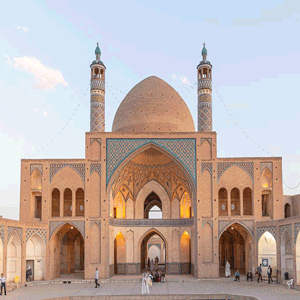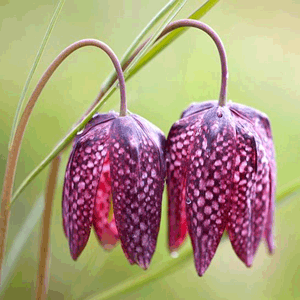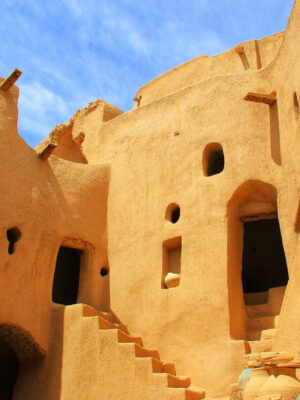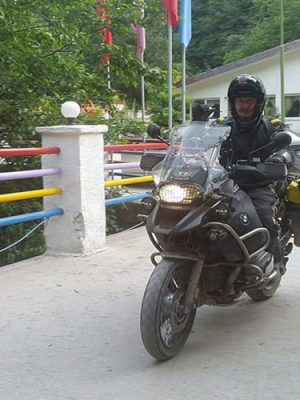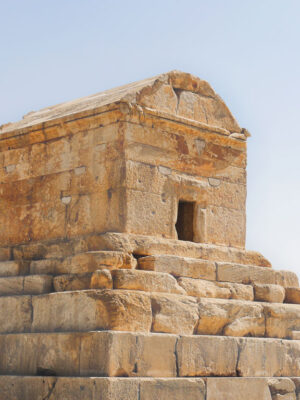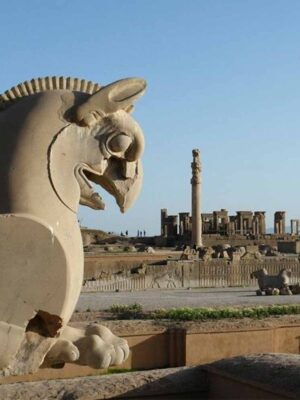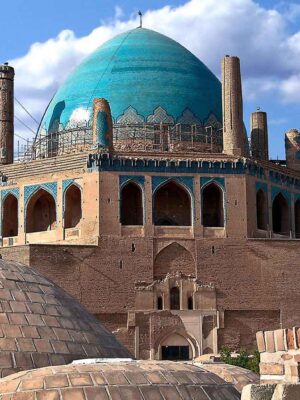Shushtar Historical Hydraulic System
Located in Khuzestan Province in Iran, the Shushtar Historical Hydraulic System (the watermills and waterfalls) is a complex irrigation system. The watermills and the waterfalls are located near Gargar River which is a branch of Karun River, Iran’s longest (950 km) and only navigable river. It has many tributaries and passes through Ahvaz, the capital of the Khuzestan Province.

Parts of Shushtar irrigation system are said to originally date back to the time of Darius the Great, the Achaemenian king of Iran in 5th century B.C. It partly consists of a pair of primary diversion canals in the Karun River, one of which is still in use today. It delivers water to Shushtar city via a route of supplying tunnels.
The site includes a collection of dams, tunnels, auxiliary canals which were used for agricultural and economic purposes.
Dams and rivers of this area include the following:
Sharabdar Dam Bridge which is located in the south of Shushtar and was part of the city’s fence.
Band Mizan (Mizan Dam) which is a man-made structure dating back to the time of the Sassanids (226 AD.) This dam is between two branches of Karun River to regulate and divide the amount of water in the Karun River.
The Shushtar Gargar Creek, which is an artificial branch of the Karun River and separates the Karun River in north of Shushtar and leads southward.
Shushtar Mahibazan Dam which was built on the lands of the historic city of Dasva to keep the water level high.
Dokhtar Dam (Girl Dam) The ‘Girl Dam’ is based on the last mountain passage through which the Karun River passes through. Some people believe that the reason for naming it the Girl dam is because of Anahita, the goddess of fertility in ancient Iran.
Shushtar waterfalls and watermills are exceptional examples of their kind, and amongst the most amazing sites of Iran. Many travelers have mentioned Shushtar historical hydraulic system in their books about Iran. The French archaeologist Jean Diulafova called the structure “the largest industrial complex before the Industrial Revolution”.
Shushtar Historical Hydraulic System
Located in Khuzestan Province in Iran, the Shushtar Historical Hydraulic System (the watermills and waterfalls) is a complex irrigation system. The watermills and the waterfalls are located near Gargar River which is a branch of Karun River, Iran’s longest (950 km) and only navigable river. It has many tributaries and passes through Ahvaz, the capital of the Khuzestan Province.

Parts of Shushtar irrigation system are said to originally date back to the time of Darius the Great, the Achaemenian king of Iran in 5th century B.C. It partly consists of a pair of primary diversion canals in the Karun River, one of which is still in use today. It delivers water to Shushtar city via a route of supplying tunnels.
The site includes a collection of dams, tunnels, auxiliary canals which were used for agricultural and economic purposes.
Dams and rivers of this area include the following:
Sharabdar Dam Bridge which is located in the south of Shushtar and was part of the city’s fence.
Band Mizan (Mizan Dam) which is a man-made structure dating back to the time of the Sassanids (226 AD.) This dam is between two branches of Karun River to regulate and divide the amount of water in the Karun River.
The Shushtar Gargar Creek, which is an artificial branch of the Karun River and separates the Karun River in north of Shushtar and leads southward.
Shushtar Mahibazan Dam which was built on the lands of the historic city of Dasva to keep the water level high.
Dokhtar Dam (Girl Dam) The ‘Girl Dam’ is based on the last mountain passage through which the Karun River passes through. Some people believe that the reason for naming it the Girl dam is because of Anahita, the goddess of fertility in ancient Iran.
Shushtar waterfalls and watermills are exceptional examples of their kind, and amongst the most amazing sites of Iran. Many travelers have mentioned Shushtar historical hydraulic system in their books about Iran. The French archaeologist Jean Diulafova called the structure “the largest industrial complex before the Industrial Revolution”.






